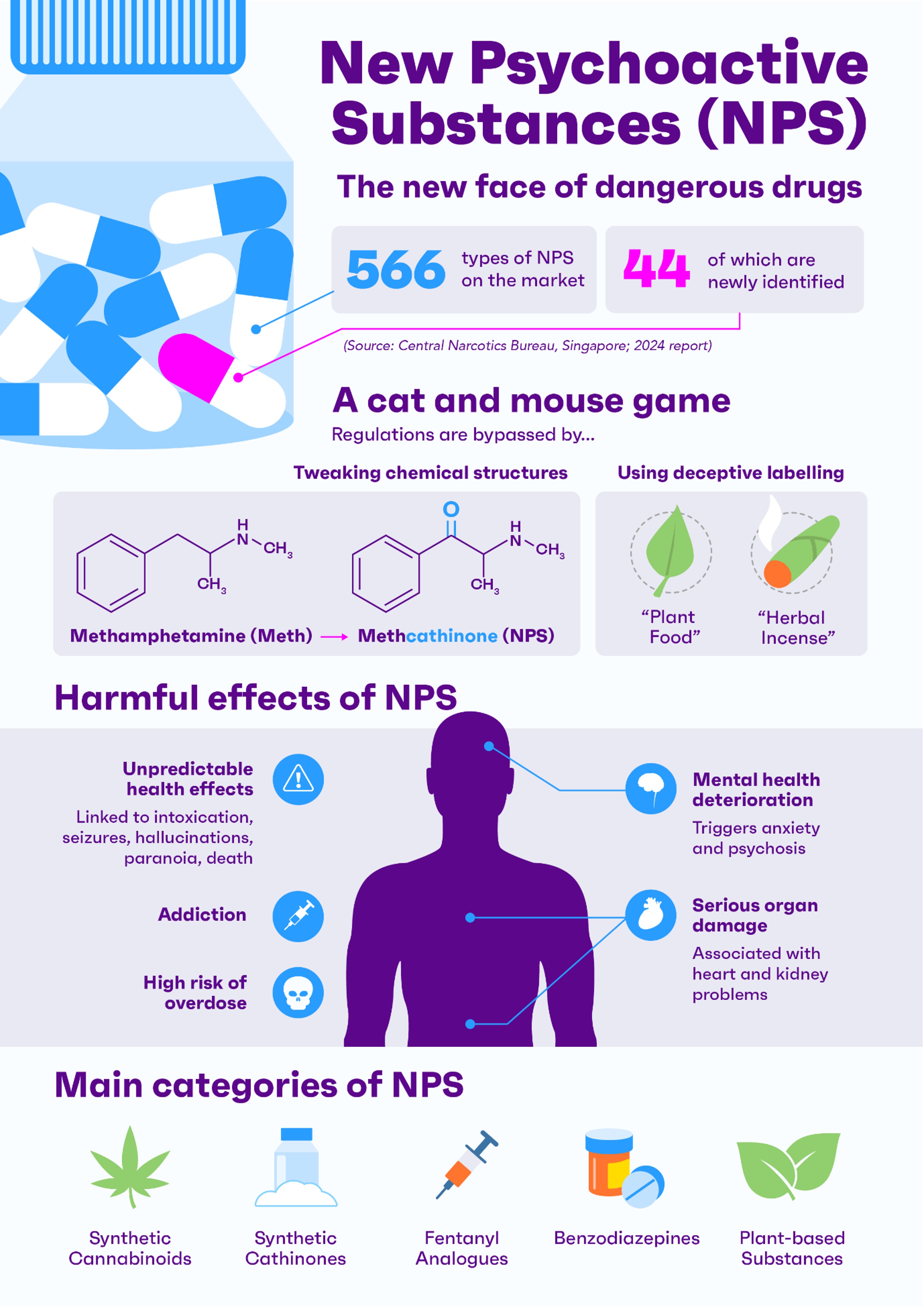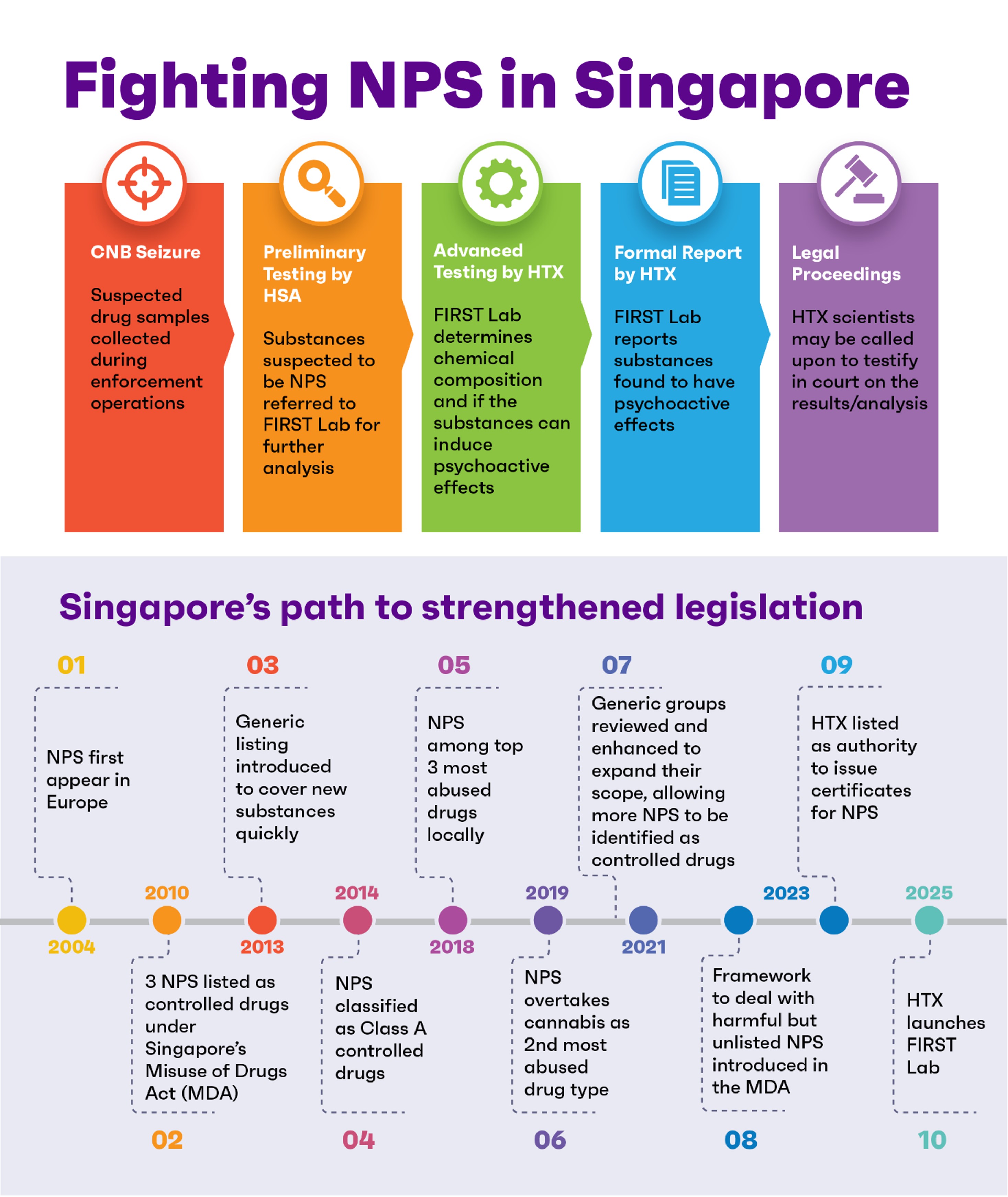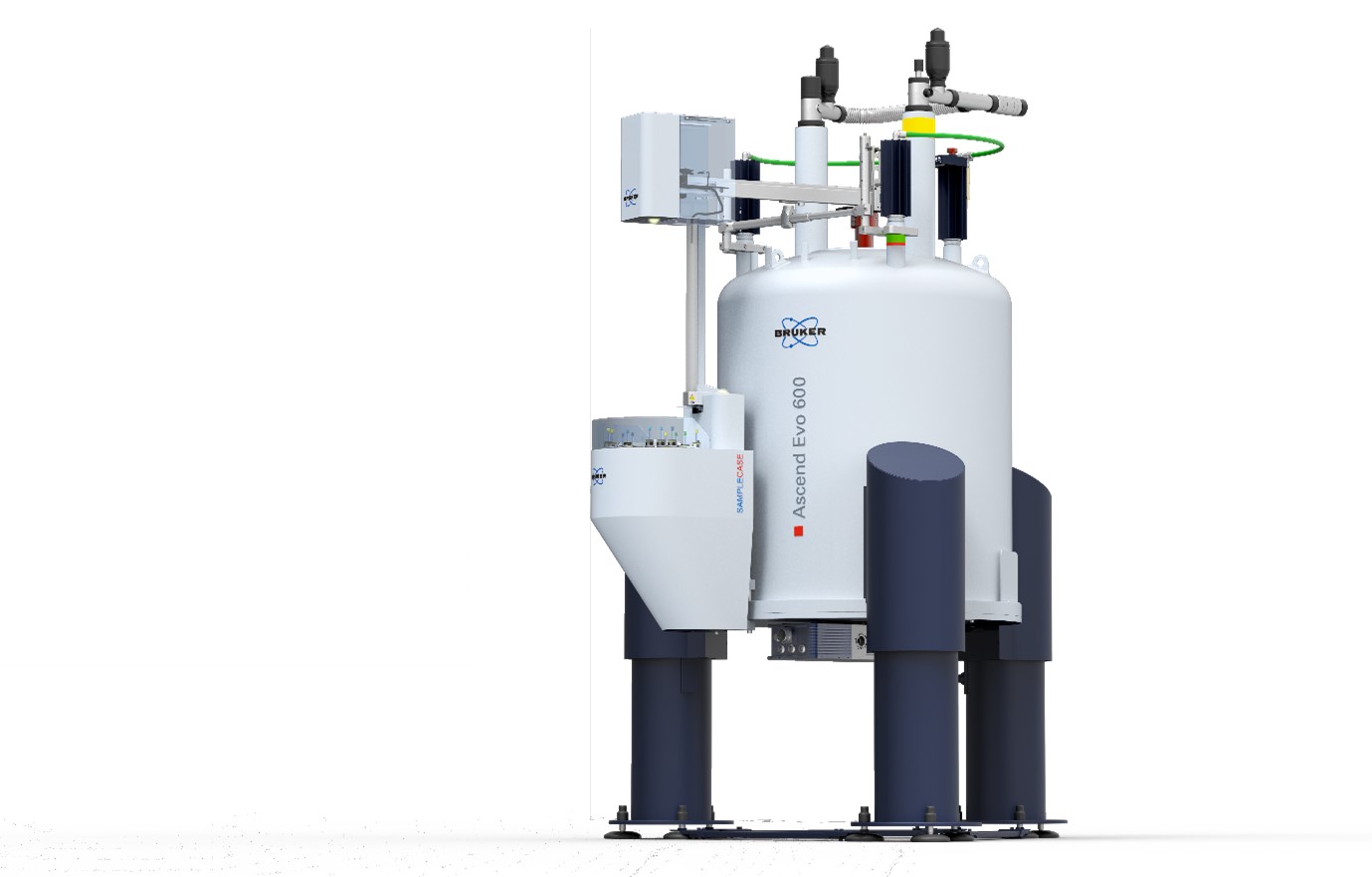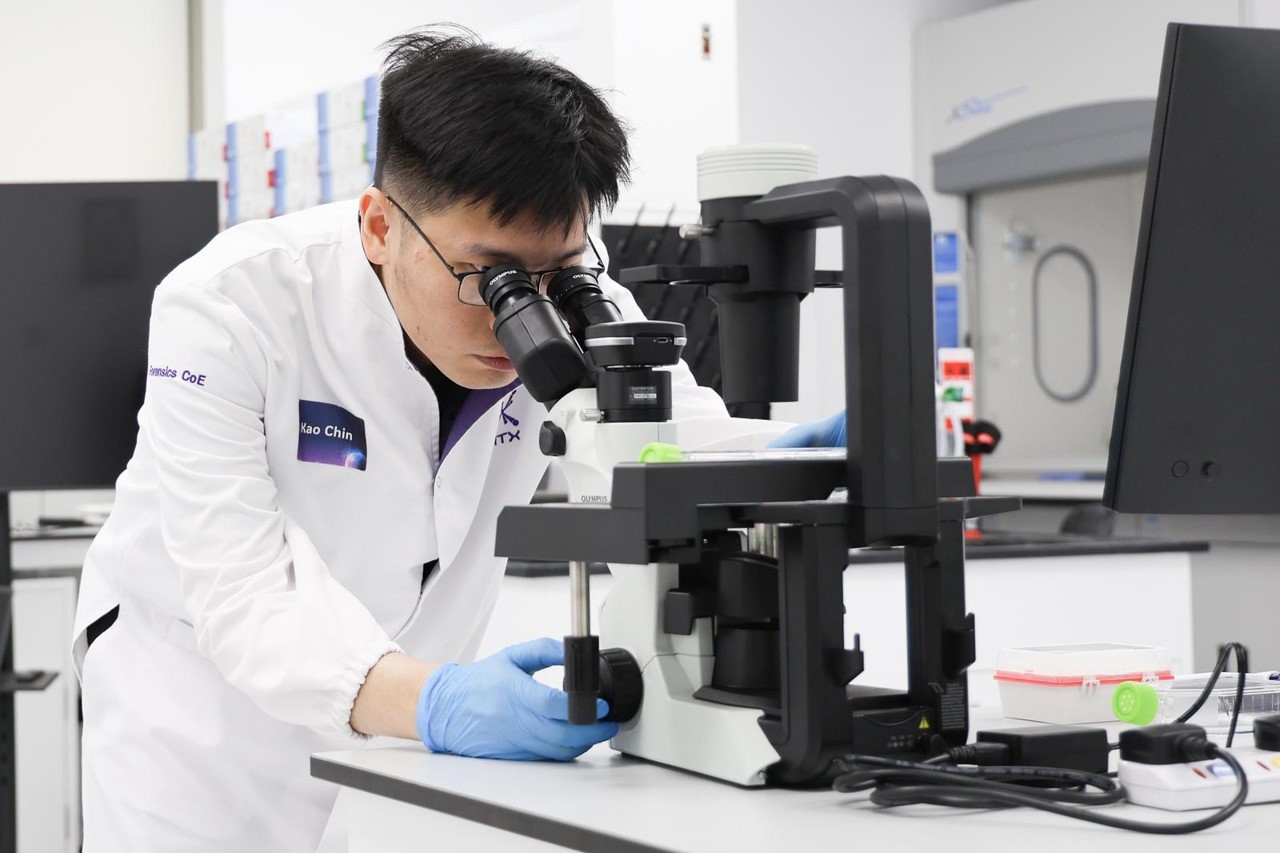 New Psychoactive Substances (NPS) are on the rise around the world. (Photo: Freepik)
New Psychoactive Substances (NPS) are on the rise around the world. (Photo: Freepik)
A global increase in the supply of New Psychoactive Substances (NPS) – chemically engineered compounds designed to mimic the effects of illicit drugs while skirting existing laws – is posing new challenges for the authorities and society.
Unlike traditional drugs with well-known structures and effects, such substances are often newly synthesised compounds that aren’t included in standard drug testing libraries, making them more difficult to detect using conventional methods.
 (Infographic: HTX/Nicole Lim)
(Infographic: HTX/Nicole Lim)
The hidden dangers of NPS
While NPS are typically marketed as “legal highs” under deceptively innocuous labels, they have unknown and potentially severe toxicological effects. They can be as addictive and harmful as controlled drugs such as fentanyl.
“Tweaking a compound’s chemical structure can significantly change its potency, making it more or less potent depending on the modifications,” said Yong Yuk Lin, a Deputy Director at HTX’s Forensics Centre of Expertise (CoE).
“When a compound becomes much more potent, it can lead to fatal effects.”
There have been at least four NPS-related deaths in the country since 2016.
Fighting NPS through legislation and forensics
 (Infographic: HTX/Nicole Lim)
(Infographic: HTX/Nicole Lim)
To tackle this growing challenge, Singapore has adopted a combined strategy of tighter legislation, advanced forensic science and strong inter-agency coordination involving HTX, Central Narcotics Bureau of Singapore (CNB) and the Health Sciences Authority (HSA).
HTX plays a critical role in bolstering the nation’s fight against the evolving threat of NPS. In April 2025, the agency launched FIRST (Forensic Innovation and Research for Strategic Transformation) Lab, Singapore’s first forensic laboratory that analyses NPS for psychoactivity.
FIRST Lab takes a dual approach in analysing suspected NPS. “First, we determine the chemical structure of the substance using techniques like mass spectrometry and Nuclear Magnetic Resonance (NMR). Then, we assess its pharmacological profile – how it interacts with the human body and what effects it may have,” explained Dr Ngeow Kao Chin, a Senior Forensic Scientist from HTX’s Forensics CoE.
NMR reveals the arrangement of the atoms in a molecule, while mass spectrometry measures the substance’s molecular weight and composition.
FIRST Lab is one of only a handful of facilities in Singapore equipped with an NMR spectrometer, which allows scientists to look beyond pre-existing drug databases and decode the unknown.
 The NMR spectrometer at HTX’s FIRST Lab is equipped with cutting-edge capabilities. (Photo: HTX/FIRST Lab)
The NMR spectrometer at HTX’s FIRST Lab is equipped with cutting-edge capabilities. (Photo: HTX/FIRST Lab)
“NMRs work by using magnetic fields to reveal the unique chemical ‘fingerprint’ of a substance,” explained Yuk Lin. “This makes it especially powerful in identifying suspected NPS as it gives us a nearly complete picture of the molecule’s structure, with over 99% confidence.”
But understanding the chemical structure is only half the equation. FIRST Lab also investigates the substance’s psychoactive effects – how it influences the brain. “We examine whether it binds to neurological receptors in the same way as known drugs,” said Dr Ngeow. “If it triggers similar biochemical changes, we can confirm its psychoactive nature.”
This layered analysis allows authorities to prosecute even when a substance isn’t explicitly listed under existing drug laws.
“If it’s not scheduled under the Misuse of Drugs Act, we assess its psychoactivity instead. That gives us an alternative route to regulate it,” explained Yuk Lin.
 Dr Ngeow Kao Chin, a Senior Forensic Scientist from HTX’s Forensics CoE, at FIRST Lab. (Photo: HTX/FIRST Lab)
Dr Ngeow Kao Chin, a Senior Forensic Scientist from HTX’s Forensics CoE, at FIRST Lab. (Photo: HTX/FIRST Lab)
By blending chemistry, pharmacology and investigative precision, FIRST Lab embodies Singapore’s dynamic response to the shifting landscape of synthetic drugs.
As Dr Ngeow put it: “It’s not just about testing a substance – it’s about understanding what it is, how it works and what it does to people.”
And while both scientists caution that NPS are fast-evolving and getting harder to monitor, they believe Singapore is well positioned to weather the storm – thanks partly to FIRST Lab.
“We are no longer playing catch up,” said Yuk Lin.

